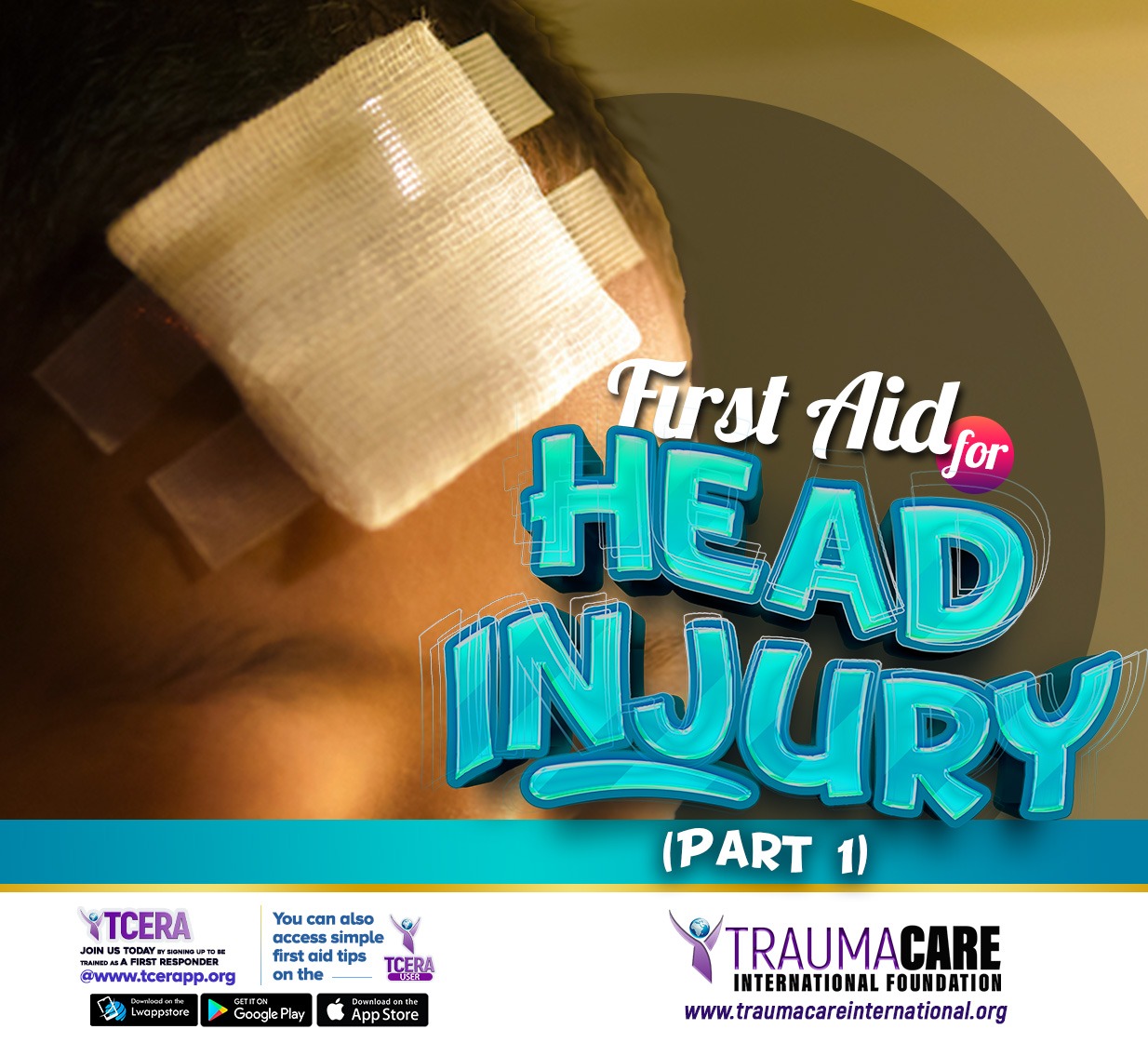Injuries to the head should be considered serious and given immediate attention, as delay can cause lifelong damage depending on the severity of the trauma whether to the scalp, skull, or brain.
Head injury can either be an open or closed one. Head injuries are caused by a variety of external forces such as road traffic accidents, gunshots, falls from a height, sporting activities, stab wounds, blunt trauma etc. Head injuries include scalp wounds, concussions, and skull fractures. All head injuries are potentially dangerous and require immediate medical attention.
Some signs of head injury include:
· Increased drowsiness
· Persistent headache
· Dizziness and confusion
· Loss of balance or memory
· Difficulty speaking or walking
· Vomiting episodes
· Double vision
· Seizure
· Deteriorating level of response
· Unresponsive
· Blood- or blood-stained watery fluid coming from the ear or nose
· Unequal pupil size
How to Manage Head Injury for a Conscious Casualty
Head injury management should not be taken lightly, and calling for help should be paramount. To execute first aid for a head injury in a casualty, follow the steps below:
1. Identify any areas with wounds, stop bleeding and apply dressing if needed. Do not apply direct pressure if you suspect a skull fracture.
2. If you suspect a skull fracture, do not apply direct pressure to the bleeding site, and do not remove any debris from the wound. Cover the wound with a sterile gauze dressing.
3. Apply an ice pack to swollen areas.
4. Assess the casualty level of responsiveness using the A.V.P.U scale.
A. - Are they alert? Check if the eyes are open.
B. V- Do they respond to verbal communication?
C. P- Do they respond to pain? Attempt to pinch the ear lobe.
D. U- Are they unresponsive to all the above? If yes, call the emergency number and tell them you suspect a head injury.
5. Monitor responsiveness while waiting for emergency service officials or transport to a hospital.
6. Encourage the casualty to minimize movement of the head and neck region.
7. Give reassurance to enable calmness.
8. If the casualty is vomiting or about to vomit, put them in the recovery position to avoid choking.
To learn more about first aid for other emergency scenarios, please use the 'learn first aid’ feature on the TCERA app for access to our wide array of first aid courses.





What do you think?
0 Responses
To Comment, you must Sign In
Be the First to Post on this Topic